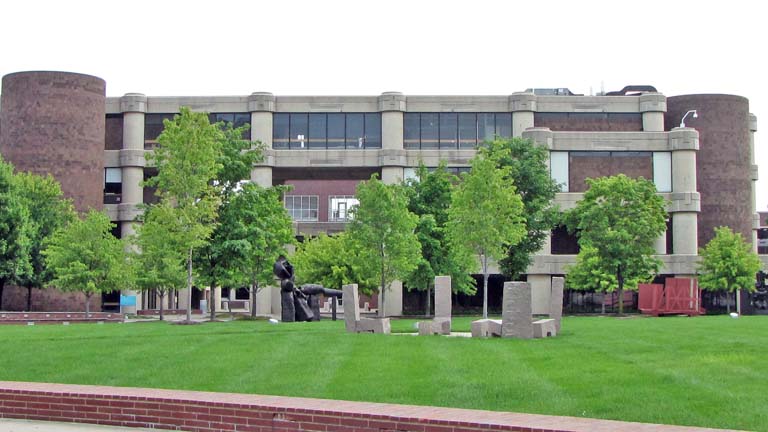
College for Creative Studies/Center for Creative Studies
The campus of this college is located in Detroit's Cultural Center and
is bounded by
John R., Frederick Douglas, Brush and East Ferry.
Around the turn of the 20th century, an arts and crafts movement encouraged artistic creativity in the United States and England— creativity by people who were not formally trained in the arts. The arts and crafts movement led to several enduring and highly productive organizations in Detroit, reflecting the creativity of its residents and the strong support for the arts found in this prosperous metropolis. Pewabic Tile and the Scarab Club thrive into the 21st century and can be linked back to the popularity of the performing and creative arts in Detroit. In 1906, a Society of Arts and Crafts was founded in the city and, in 1911, they began offering informal courses in design, drawing and woodcarving. In 1926, they started a more coordinated educational program in the arts and, in 1933, they recognized the automobile as an art form and added appropriate courses in industrial design. This was just before 1935 when Chrysler used their airflow bodies—one of the most imaginative designs ever used for an American auto, albeit an unsuccessful one. In 1950, the Society of Arts and Crafts moved to its present location in the Cultural Center and, in 1962, began offering Bachelor of Fine Arts degrees in industrial design. In 1975, the name was changed to the Center for Creative Studies and the intriguing Kresge-Ford Building was opened for students and faculty.
Can you imagine designing and then constructing a building using huge tinker toy pieces—pieces that might be taken apart and then reassembled to provide more space? The architects—William Kessler and Associates—utilized this idea when they designed this impressive home for the Center for Creative Studies. The essential mechanical linkages go through the large supporting tubes—just like the spokes in a Tinker Toy set. But the interstitial spaces may be used for the insertion of modules to serve as additional design studios, classrooms or offices. The campus includes several other interesting buildings including one designed by Minuru Yamasaki. There are several sculptures on campus including the Arch: Montrose by Susanna Linburg (1991) and the Normanno Wedge I by Beverly Popper (1983).
In 2001, the name was changed to the College for Creative Studies and a new Walter Ford Building for design was opened. The College restored several interesting late Victorian homes on East Ferry and integrated them into the campus. In 2002, about 1200 students were enrolled seeking their BFA degrees in 8 departments with 19 specialties.
Website: http://www.ccscad.edu
Photo: Ren Farley, November, 2002